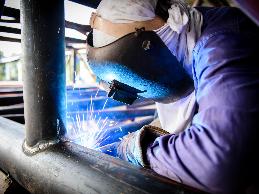From the desk of Lisa Mathess, M.A., SHRM-CP, Principal Consultant, ADA Specialist
Cataplexy by itself is a rare disease, but is considered one of the major indications of narcolepsy. Cataplexy is the sudden loss of muscle tone or temporary paralysis caused by extreme emotion (laughter, stress, or anger). While a cataplectic attack is usually very short in duration and leaves no residual effects, there may be symptoms that would require workplace accommodations. Some of the most common limitations stemming from a cataplectic attack are weakened speech, vision issues, trouble balancing, upper extremity weakness, and/or collapsing.
Below are examples of how cataplexy has been successfully accommodated in the workplace.
- A secretary with cataplexy would experience an attack after a fit of laughter, causing her to fall out of her chair. She was accommodated with an office chair with arm rests and a lap belt so she would not fall to the floor.
- A newspaper editor would temporarily have impaired speech shortly after a cataplectic attack. To maintain constant communication with her colleagues, she was accommodated with an instant messaging program on her computer.
- An accountant was experiencing stress due to an increased workload, resulting in more frequent cataplectic attacks. To accommodate him, his employer restructured his position to only include the essential functions. The employer also referred him to the company Employee Assistance Program (EAP) to help manage his stress.
- A paralegal would have weakness and numbness in her dominant hand immediately following a cataplectic attack. To continue her case documentation, she was accommodated with a one-handed keyboard and speech recognition software.
- A welder with cataplexy wanted to make his work area safe when he had a cataplectic attack. His employer provided him with a welder's helmet with additional padding and installed a safety switch on his welding equipment.
- A warehouse worker would collapse during a cataplectic attack. To ensure workplace safety, his work area was covered with rubber matting to cushion his fall and he was provided a harness for times he had to climb up a ladder.
For more information and accommodation ideas that may be helpful for individuals with cataplexy, visit JAN's A to Z: Cataplexy.


